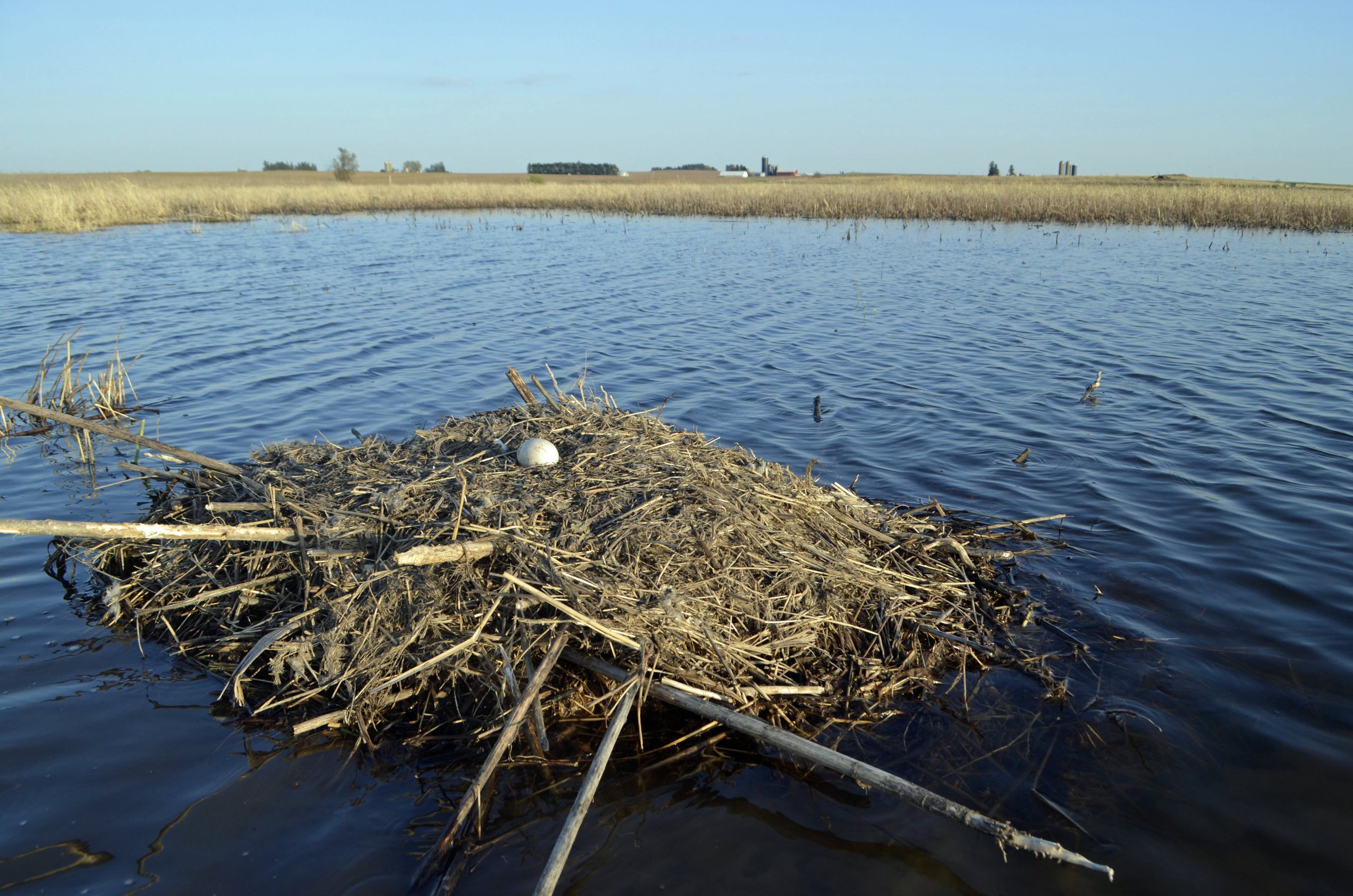Photo by Arlene Koziol
Have you observed the early summer migration of giant Canada geese?
Bill Voelkert, retired DNR Wildlife Biologist/Naturalist stationed at Horicon Marsh wrote on May 27th:
A failed Canada goose nest at Goose Pond Sanctuary. This pair will probably be heading to Canada soon. Photo by Mark Martin
“I noticed during the past two days that the Canada geese in our area are beginning to form flocks and move around locally. I believe that it is still a bit early for the actual molt migration, but the non-breeders and failed breeders are beginning to flock and likely attracting others in preparation for their northern flight where they will molt (replace) their feathers. This usually takes place when nearly all of the young have hatched and likely allows failed breeders to join the flocks. The only clutches that remain to hatch in the southern part of the state are re-nesting attempts at this time and some of the early hatched young are nearly half grown already.
I usually see the first movement of molt migrants around early June with others migrating over the next two weeks or so. When geese are moving about locally they tend to fly only a few hundred feet high, but we will soon see flocks at higher altitude and heading north, which is an indication of the molt migration.
Nesting pairs are very quiet at this time of year since they don't want to draw attention to their young, particularly when they are feeding in the uplands. The honking we hear at this time of year are the non-breeders that are flocking up with others.”
* * * * * * * * * * *
Could they get any cuter? Photo by USFWS Midwest
At Goose Pond we have a pair of Canada geese with seven goslings, another pair, and a flock of 56. Our guess is that the pair will join the flock of 56 and begin their molt migration to the resource-rich wetlands of Canada in the next few days. Some researchers believe that the flightless geese during their molt may encounter fewer predators in the tundra. We have also heard that the migrants are not around to compete with the broods for food. However, at this time of the year there should be plenty of grass to graze on.
Waterfowl Biologists from Michigan learned that their geese migrate over 600 miles to the area around James Bay. They also learned that most of the non-breeding geese in the countryside migrate while only about a quarter of their “park” geese participate in the migration.
All the geese nesting in Wisconsin are the "giant" subspecies (Brania Canadensis maxima). In the 1800’s, this subspecies was hunted year round, and eggs and young were also taken for food. By the 1900s, there were probably no nesting giant Canada geese in Wisconsin. However, game breeders had them and the breeders provided the source for the DNR reintroductions in the 1960s and 1970s.
Photo by Arlene Koziol
In 1970, Mark helped moved the pinioned adults at Crex Meadows State Wildlife Area from their winter pens to their summer pen. Their offspring would then fly out of the summer pen to establish a population in the local area. The first time in the 20th century that Canada geese nested at Goose Pond was in 1996. Last year the WI DNR Waterfowl Biologists estimated the giant Canada goose population at 158,000.
Canada geese do not begin nesting until they are two years old. This must be an exciting time for the one year old birds that are about to head north, led by the older failed breeders, for a summer vacation in the land of the polar bears. If you hear a flock of geese, look skyward to see it they are in V formation and heading north.
Written by Mark Martin and Susan Foote-Martin, Goose Pond Sanctuary resident co-managers







